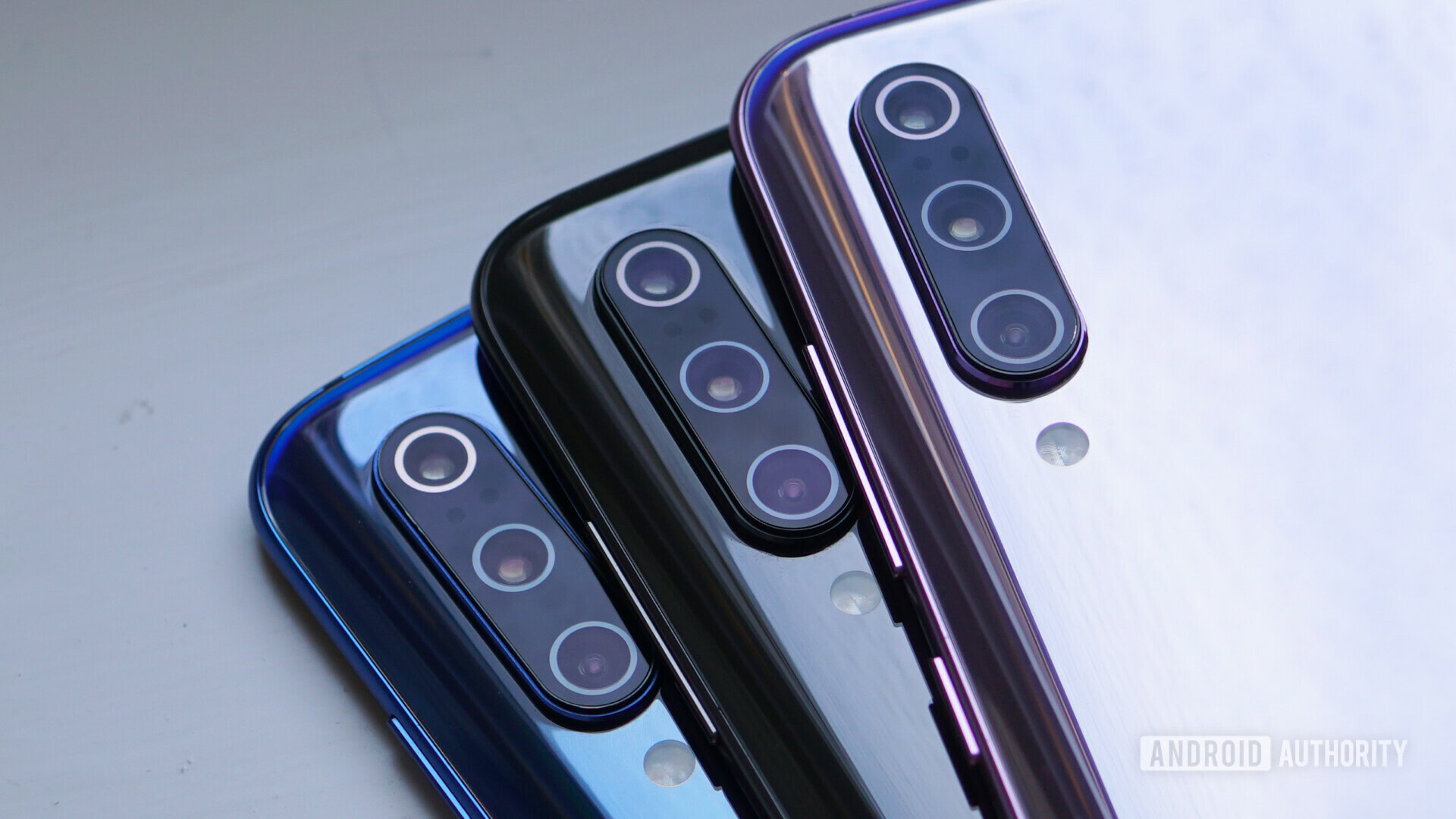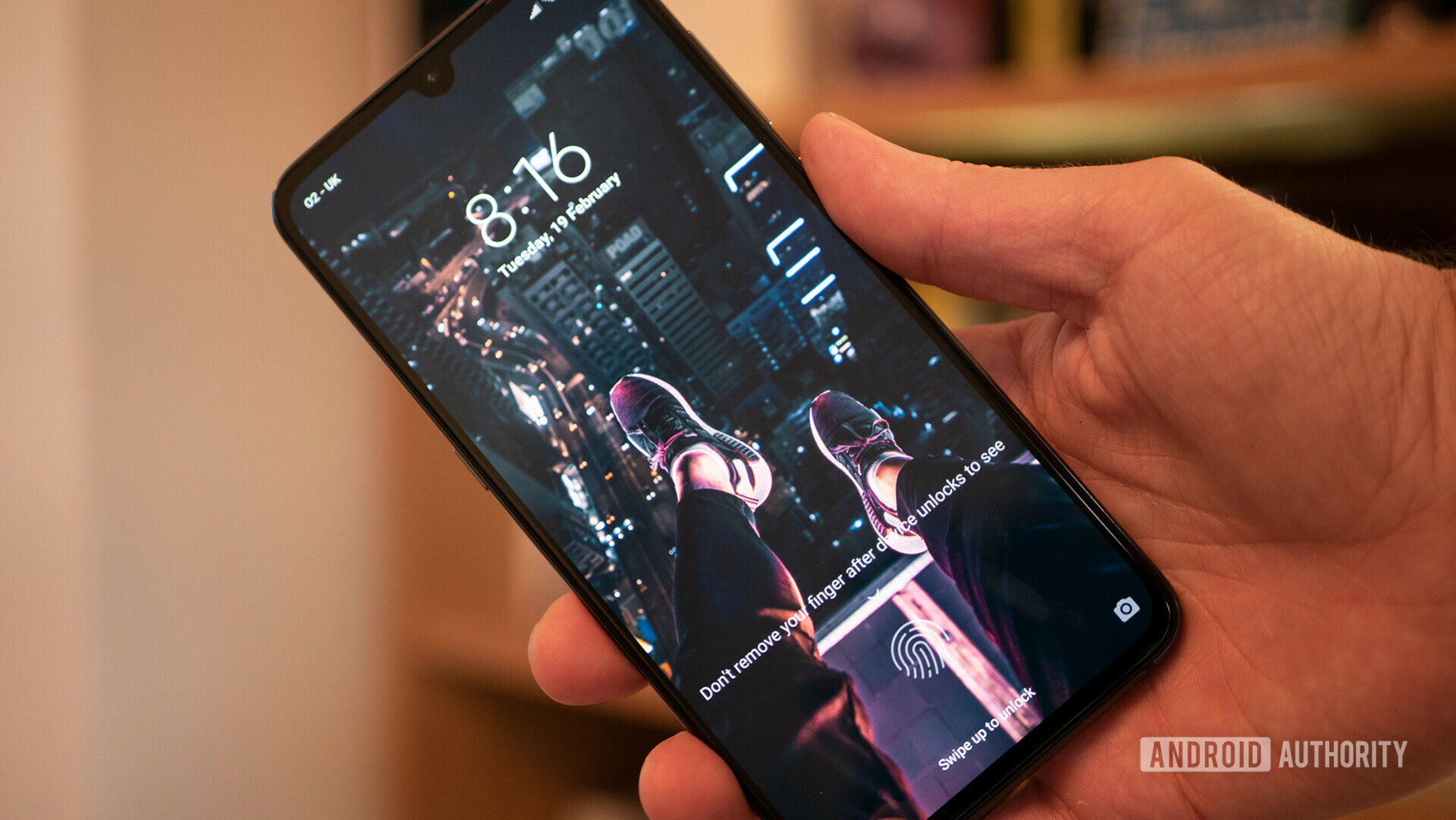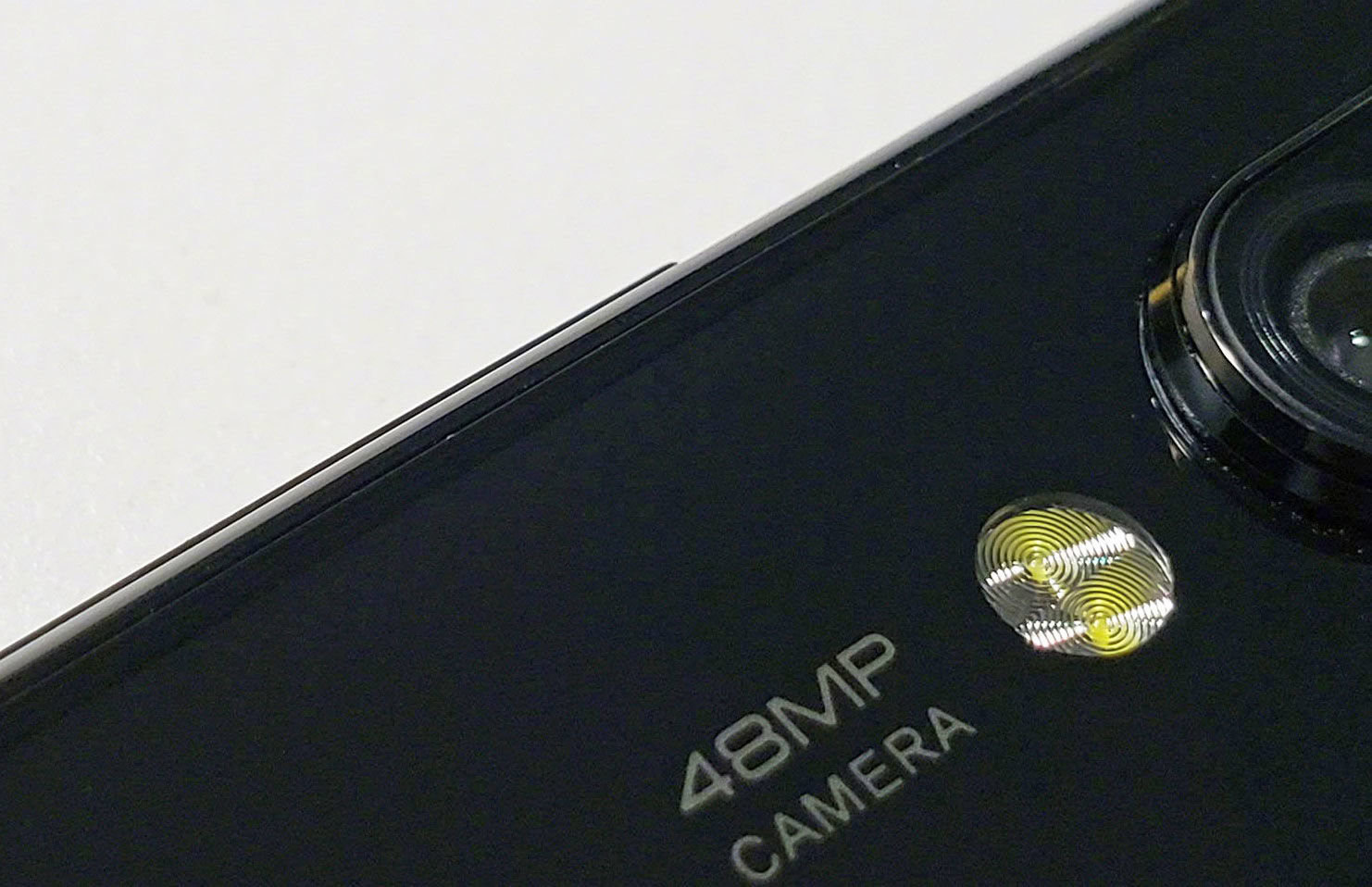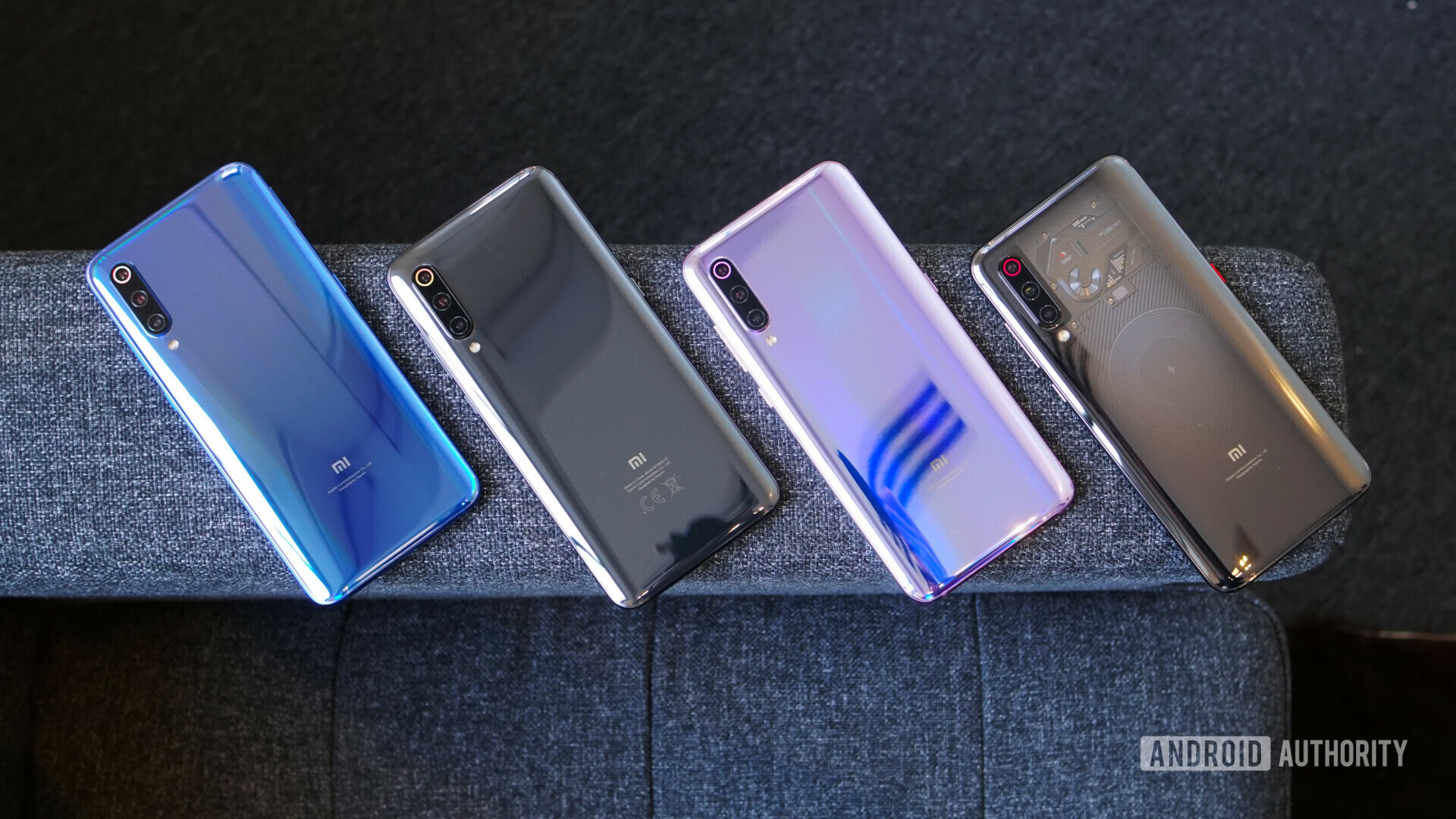Affiliate links on Android Authority may earn us a commission. Learn more.
Xiaomi Mi 9 announced: Snapdragon 855, 48MP triple camera for under $500
Published onApril 17, 2019
The Xiaomi Mi 9 has been teased by the brand for several weeks, but it has now finally announced the phone in China. So is it a worthy follow-up to the firm’s previous flagships?
Xiaomi’s earlier teasers revealed the phone’s glass design, and those “holographic” color schemes are indeed available on the finished product as you’d expect. The company says it’s using a new process to create the back, spraying a “very fine mist” onto the glass in order to change the way the light is refracted off the device.
Don’t miss: The full list of Xiaomi Mi 9 specs
Based purely on specifications, the Mi 9 seems like your standard 2019 flagship. That means a Snapdragon 855 chipset, 6/8/12GB of RAM, 64/128/256GB of expandable storage, and a 3,300mAh battery. You’ve also got a 6.39-inch full HD+ AMOLED screen (with a waterdrop notch and Gorilla Glass 6), hosting an in-display fingerprint sensor.
Look a little closer, and you’ll notice there’s more than meets the eye. The in-display sensor is actually an upgraded scanner from Goodix, which should make for a faster and more reliable experience. Additionally, Xiaomi says you can long-press it for shortcuts (e.g. QR scanning or search functionality). Unfortunately, shortcuts can’t be customized just yet, but it’s still a rather clever use for the sensor. Another noteworthy change compared to the Mi 8 is the addition of a hardware shortcut key for summoning voice assistants. It can also be double-tapped for various shortcuts.
Xiaomi joins the triple-camera club

Arguably the biggest departure from previous Xiaomi flagships is the triple rear camera setup, which is a first for Xiaomi. Much like the LG V40 and HUAWEI Mate 20 series, Xiaomi has fortunately opted for a versatile normal/ultra wide/telephoto trio (no depth sensor here).
What’s even more surprising is the manufacturer’s use of a 48MP main camera (Sony IMX586), as the vast majority of phones with a 48MP sensor are only accompanied by a depth sensor or 3D ToF camera. In fact, Huawei’s Nova 4 is the only other triple rear camera phone I can think of with a 48MP camera, and even then, the third shooter is actually a depth sensor.
As you’d expect, Xiaomi’s 48MP camera defaults to pixel-binning to give you better shots (especially at night). But the firm says you’ll need to jump into the Pro mode to manually enable a full-resolution 48MP snap. The company’s night mode also makes an appearance here, in case you need even more help shooting at night. Want to get closer to the action? Then you’re looking at a 12MP 2x telephoto snapper (f/2.2, one micron pixel), offering a similar secondary camera as the Mi 8.
Related: Xiaomi Mi 9 vs HONOR View 20, OnePlus 6T, and Nokia 8.1
A new addition to the back is a 16MP ultra-wide camera with a 117-degree field of view. But Xiaomi says it’s also using “AI ultra-wide angle distortion correction” to fix the edges of those super-wide shots. Furthermore, the camera app will also suggest when to shoot with the ultra wide-angle camera, much like HUAWEI’s flagship. Xiaomi is also following HUAWEI by offering a super macro mode via the ultra wide-angle snapper too (four centimeters compared to the Mate 20 Pro’s 2cm).
Selfies are handled by a 20MP camera (f/2.0, 0.9-micron pixels), complete with a software-driven portrait mode.
The Xiaomi Mi 9 is looking like a pretty flexible camera platform then, but it could deliver in the quality department too. Camera testing firm DxOMark gave it a score of 107 points, giving it 112 points for photos and 99 for video. This total score puts it in third place, two points behind the HUAWEI Mate 20 Pro and P20 Pro.
Xiaomi Mi 9: faster in more ways than one

The Xiaomi Mi 9 also serves up a faster charging solution, delivering 27 watt wired charging via its ‘Charge Turbo’ solution (the Redmi Note 7 offers 18-watt charging). In fact, the company says it only takes one hour and four minutes to fully charge the device.

Faster charging extends to wireless charging too, as the phone offers 20-watt wireless speeds. Xiaomi says it takes one hour and 40 minutes to fully juice up the device via the official 20-watt charging pad. The biggest downside to all of this, however, is that the company is only including an 18-watt charging adapter in the box. That means you’ll want to splash out on the 20W wireless charging pad, as it comes with a power adapter capable of 27-watt wired charging.
The 20 watt wireless charging pad is available for 99 yuan (~$15). But you can also pick up a wireless charging power bank (10,000mAh), coming in at 149 yuan (~$22). And if that’s not enough, Xiaomi is also selling a 20 watt wireless charger for your car, complete with a grip that automatically opens and closes when you reach for the charger. The car charger retails for 169 yuan (~$25).

In China, the Xiaomi Mi 9 is available in black, blue, and purple, starting at 2,999 yuan (~$447) for the 6GB/128GB model and 3,299 yuan (~$491) for the 8GB/128GB variant. While there is no Mi 9 Pro in the works, the brand is preparing a Transparent Edition with decorative parts on the back (much like the Mi 8 Explorer Edition), offering 12GB of RAM and 256GB of expandable storage for 3,999 yuan (~$595).
The global version of the device sports 6GB of RAM paired with either 64GB or 128GB of storage. Pricing starts at 450 euros (~$506). Xiaomi said it might release the Mi 9 Transparent Edition globally as well at a later date if there will be enough demand.
Need something a little cheaper than the standard Mi 9? Then you can grab the Xiaomi Mi 9 SE, starting at 1,999 yuan (~$297) for the 6GB/64GB model. A variant with 6GB of RAM and 128GB of storage is also available for 2,299 yuan (~$342). This phone offers a Snapdragon 712 chipset, 5.97-inch OLED screen (complete with waterdrop notch), in-display fingerprint sensor, 3,070mAh battery, a 20MP selfie shooter, and a triple rear camera (48MP+8MP+13MP). In Europe, pricing starts at 350 euros.